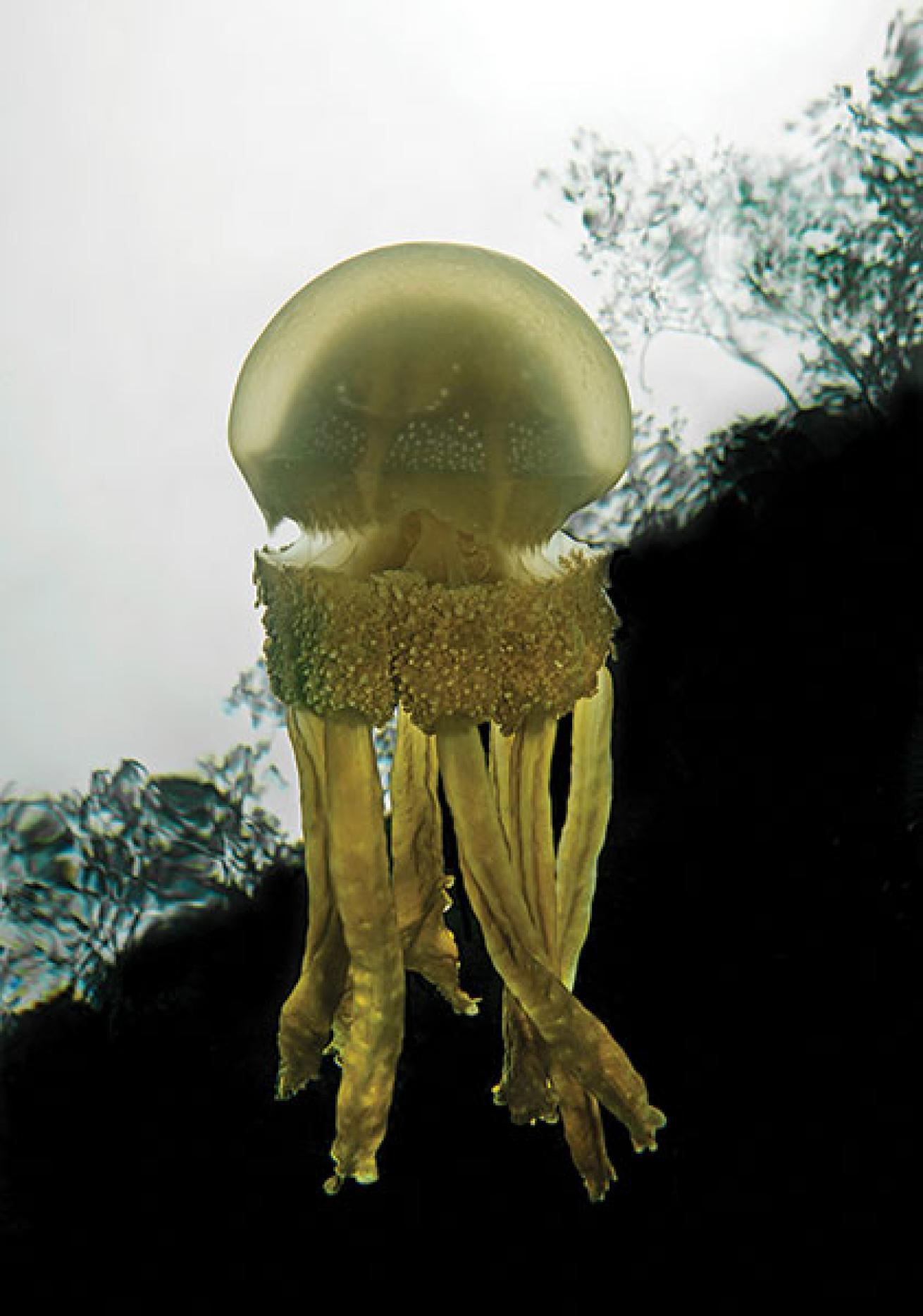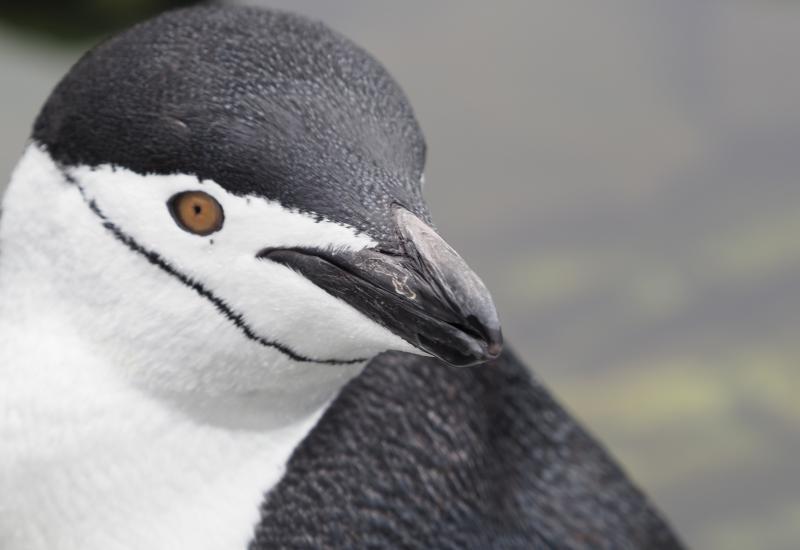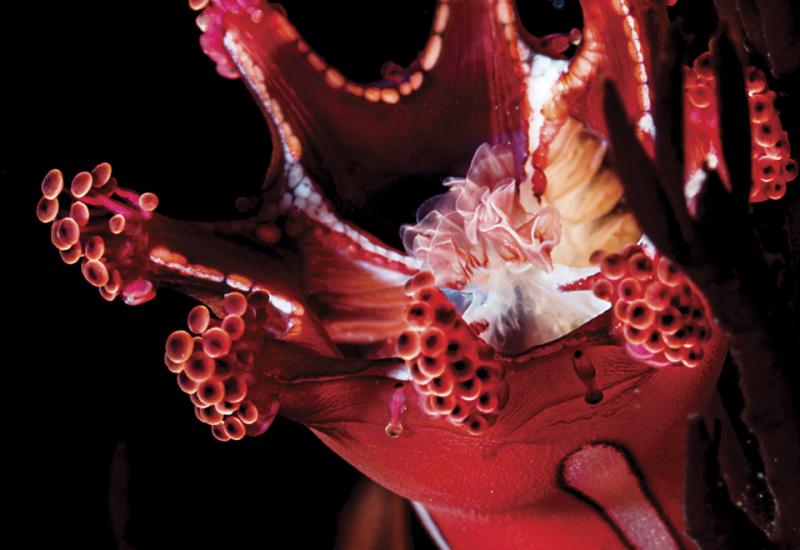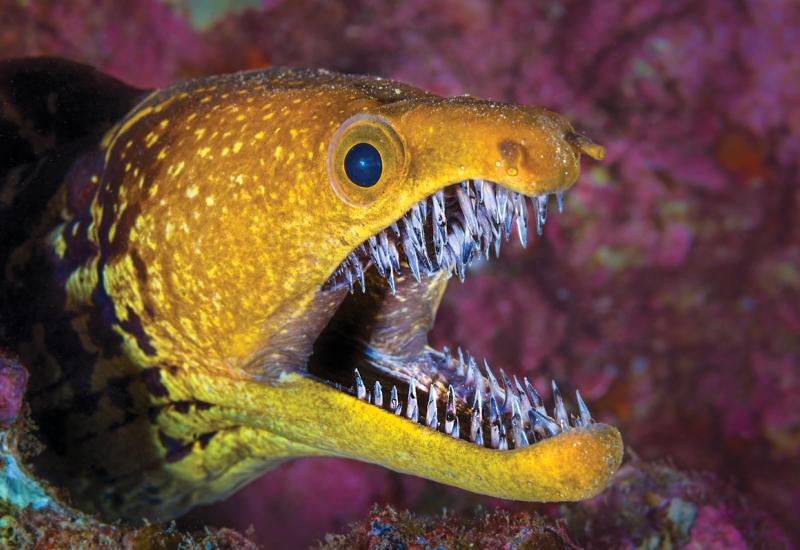Critter Hunt: Jellyfish Gardening

A jellyfish soaks up the sun
Ned and Anna DeLoach
Many of the world’s most visually appealing underwater destinations just happen to be graced with majestic topside terrains. Raja Ampat, located in eastern Indonesia, is no exception. The tropical islands’ jungled peaks tower over a clear-water sea filled with the most diverse concentration of marine creatures ever discovered, a storybook land where you can expect the unexpected.
In our case, the unexpected is a cliff-lined lagoon harboring diver-friendly jellyfish. As our skiff winds its way up the narrow canyon, we make a half-dozen stops to admire pitcher plants and orchids cascading from the cliff face, and to gaze up in awe at the palm-fringed forest edging the gorge hundreds of feet above.
When we finally arrive at the jellyfish, we cut the engines and glide across the calm water in silence passing over a dozen or more large, 1- to 2-foot specimens pulsing slowly just beneath the surface. Fortunately, we do not have to worry about stings. Unlike typical jellyfish that trail mops of translucent stinging tentacles to capture prey, these animals belong to family Mastigidae — a group that farms symbiotic algae within their tissue. (The smaller spotted jellyfish that flourish in seawater lakes, most famously in Palau, also share the family name.)
There is no need for either scuba or covering, these are pastoral beasts basking near the surface to supply light for their inner gardens. What a treat to observe the whimsical animals at such close quarters. Below their cantaloupe-sized domes, four sets of frilly oral arms and long sausage-shaped appendages dangle, bearing the same golden-brown hue as the resident algae.

Ned and Anna DeLoach
Many of the world’s most visually appealing underwater destinations just happen to be graced with majestic topside terrains. Raja Ampat, located in eastern Indonesia, is no exception. The tropical islands’ jungled peaks tower over a clear-water sea filled with the most diverse concentration of marine creatures ever discovered, a storybook land where you can expect the unexpected.
In our case, the unexpected is a cliff-lined lagoon harboring diver-friendly jellyfish. As our skiff winds its way up the narrow canyon, we make a half-dozen stops to admire pitcher plants and orchids cascading from the cliff face, and to gaze up in awe at the palm-fringed forest edging the gorge hundreds of feet above.
When we finally arrive at the jellyfish, we cut the engines and glide across the calm water in silence passing over a dozen or more large, 1- to 2-foot specimens pulsing slowly just beneath the surface. Fortunately, we do not have to worry about stings. Unlike typical jellyfish that trail mops of translucent stinging tentacles to capture prey, these animals belong to family Mastigidae — a group that farms symbiotic algae within their tissue. (The smaller spotted jellyfish that flourish in seawater lakes, most famously in Palau, also share the family name.)
There is no need for either scuba or covering, these are pastoral beasts basking near the surface to supply light for their inner gardens. What a treat to observe the whimsical animals at such close quarters. Below their cantaloupe-sized domes, four sets of frilly oral arms and long sausage-shaped appendages dangle, bearing the same golden-brown hue as the resident algae.










